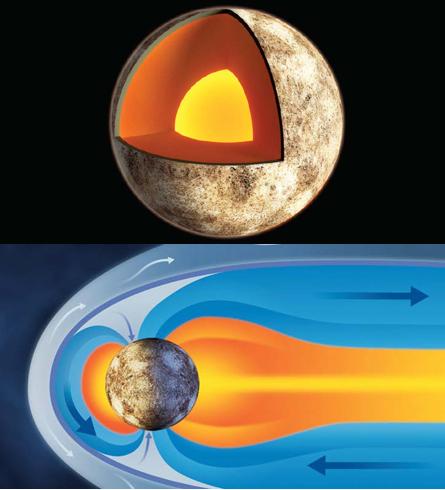According to researchers from the University of Illinois and Case Western Reserve University, deep inside the planet metallic "snow" is formed, similar to the snow on Earth that falls on the ground, this action explains the mysterious magnetic field of a hot star

New evidence points to iron "snow" forming on the planet, this movement of iron could explain the mysterious magnetic fields of a hot star. Researchers from the University of Illinois and Case Western Reserve University published in the month of April in the magazine Geophysical Research Letters a scientific explanation based on measurements and models simulating the conditions in the core of a hot star (Mercury).
A hot star is the closest planet to the sun and is one of the four inner planets (also known as the terrestrial planets). Of the four terrestrial planets, only the Earth and the planet have global magnetic activity. The magnetic activity was discovered by NASA's "Mariner 10" mission in the 70s, and measurements show that it is 100 times weaker (equivalent to 1%) than the Earth's magnetic activity.
Mercury is almost entirely composed of iron, but most models cannot explain such weak magnetic activity because Mercury's core is not hot enough to melt a nickel-iron mixture similar to Earth's, so scientists speculate that Mercury also contains sulfur, which lowers the boiling point. of the iron and plays an important role in the creation of the magnetic fields.
Recent radar measurements from Earth indicate some displacement of the surface, indicating a partially molten core. But with seismological data from the planet, scientists don't know much about the core and can only speculate. To understand in a better way, studies were carried out to examine the behavior of a mixture of molten iron and sulfur, at high pressure and high temperatures. In each experiment, the iron and the sulfur were exposed to different levels of pressure, and to different levels of temperatures which were slowly cooled.
As the core slowly cools, the iron atoms crystallize into square flakes and fall towards the center of the planet. The heavy iron sinks and the sulfur-rich liquid rises, thus creating currents that transfer heat through the liquid, which creates a dynamo effect and produces a weak magnetic field.
According to the researchers, it is likely that the metallic snow falls in two specific areas and this creates a unique situation among the terrestrial planets and terrestrial moons in our solar system.
The new experiment can explain several mysteries about the structure of a hot star in general, and its magnetosphere in particular. The experiment can be used as a basis for future observations to be made by the Mercury Messenger spacecraft which is on its way to a hot star. The spacecraft which was launched in August 2004 is planned to enter orbit around it in March 2011. We note that before that only Mariner 10 visited the hot planet (1974-1975) and photographed only about half of its surface. Mercury Messenger has already made one flyby of Mercury and will make two more flybys before entering orbit around it.

3 תגובות
A question for Rami, when will the Phoenix spacecraft reach Mars, thanks
goddess:
You probably didn't notice that there is a link right below the article.
I used it and it works.
Good Morning,
Rami I can't find the full article....
If you have a PDF of it, please send it